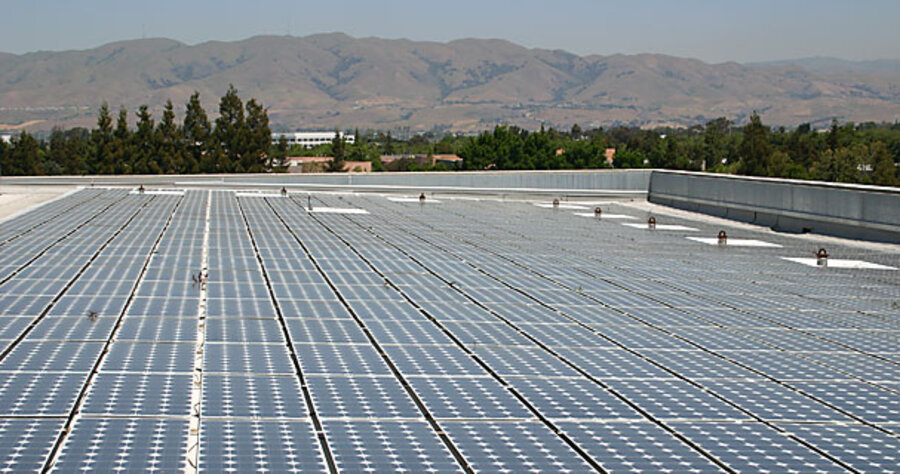Study: Solar to be competitive within a decade
Loading...
A new study claims that solar power is approaching "grid parity," in which costs are competitive with conventional retail electric rates throughout much of the United States.
The Utility Solar Assessment Study, released by the research firm Clean Edge Inc. and the nonprofit "green-economy" group Co-op America, says that as costs for solar panels and concentrating solar energy systems decline and as costs for coal, natural gas, and nuclear plants rise, the US will reach a "crossover point" around 2015:
For the first time in modern history, the price of solar-generated electricity is within striking distance of conventional energy sources for a wide range of applications. Already, solar power can compete in regions with high electricity rates and with favorable incentives. It can compete effectively for peak power production, in grid-constrained territories, and for applications that are off the grid.
According to its authors, the study is based on more than 30 interviews with solar, utility, financial, and policy experts.
The report says that, with proper investment, solar power can reach 10 percent of US power generation by 2025. The US currently gets less than one tenth of one percent from solar, but it has been growing quickly. Solar power has jumped to 3,000 megawatts in 2008 from 600 MW in 2003, the study says.
Reaching 10 percent, says the study, will require between $450 billion and $560 billion in capital costs by 2025, an average of $26 billion to $33 billion per year.
That sounds like a lot, but the report points out:
To put the projected investment in perspective, the Edison Electric Institute estimates that the U.S. electric utility industry spent more than $70 billion on new power plants and new transmission and distribution investments in 2007 alone. Conservatively assuming similar expenditures between now and 2025 (and most experts believe those annual costs will increase), we’re talking about a total investment of more than $1.2 trillion—roughly double to triple our projected investment for solar in the U.S.
The report notes that 2007 was the first year that the use of silicon by the world's solar companies exceeded use by computer chip makers. This initially led to a spike in prices, but the costs are now beginning to drop.
The Guardian reported on Monday that a number of solar panel manufacturers are planning on dramatically increasing their output in the coming years. Many companies are also planning on producing "thin film" solar panels, which are cheaper than traditional silicon panels but are less efficient.
Another factor boosting solar power is Google's RE<C initiative, which seeks to develop renewable energies that cost less than coal. In 2007, the internet search giant installed what at the time was the nation's largest commercially-owned solar array at its Mountain View, Calif., headquarters.
In the right fiscal environment, solar power's cost-effectiveness could accelerate further.
Writing in CleanTechnica, Sarah Lozanova calls for a renewal of the solar tax credit:
There is currently a 30% commercial tax credit for solar energy, but it is set to expire at the end of the year. There are purchase agreements for 3.2 gigawatts of concentrated solar power during 2007, but these solar power plants cannot be constructed before the tax credit expires. A long-term extension of the renewable energy tax credit is needed for large-scale use of solar energy. Many states also have renewable portfolio standards, but a national renewable portfolio standard would also help strengthen the industry.
Another report, prepared by the US Department of Energy and a wind power industry group, said that the US could reach 20 percent wind power by 2030.





